This article was medically reviewed by Tu Anh Vu, DMD. Dr. Tu Anh Vu is a board certified dentist who runs her private practice, Tu's Dental, in Brooklyn, New York. Dr. Vu helps adults and kids of all ages get over their anxiety with dental phobia. Dr. Vu has conducted research related to finding the cure for Kaposi Sarcoma cancer and has presented her research at the Hinman Meeting in Memphis. She received her undergraduate degree from Bryn Mawr College and a DMD from the University of Pennsylvania School of Dental Medicine.
wikiHow marks an article as reader-approved once it receives enough positive feedback. This article received 12 testimonials and 80% of readers who voted found it helpful, earning it our reader-approved status.
This article has been viewed 548,432 times.
Experts agree that tooth abscesses won't heal on their own, so you need to see a dentist if you suspect you have one.[1] A tooth abscess is typically caused by an untreated cavity, prior dental work, or an injury to your tooth. The abscess is a pocket filled with pus caused by a bacterial infection that's developed in your damaged tooth. Research suggests that your dentist may be able to save your tooth and still treat the abscess, though this isn't always possible.[2] While you wait for dental treatment, you may be able to relieve your pain and discomfort with home treatments.
Steps
Awaiting Medical Treatment
-
1Make an appointment with your dentist. If you suspect you have a tooth abscess, your first action should be to make an appointment with your dentist right away. Symptoms of a tooth abscess include fever, pain when chewing, a bad taste in the mouth, lingering bad breath, swollen neck glands, redness and swelling of the gums, discoloration of the tooth, swelling of the upper or lower jaw, or an open, pus-filled sore on the side of the gum.[3]
- A tooth abscess is not necessarily painful; a severe tooth infection will eventually kill the pulp inside the root of the tooth, at which point the tooth will lose sensation. This does not mean you are okay, now. The infection is still active, and if left untreated will cause further, serious damage.
- Depending on the type of bacteria involved in the infection and your immune system, an abscess can even cause facial deformities due to the constant accumulation of pus in the tissue.
-
2Rinse your mouth with warm salt water. Do this after meals to keep any particles from further irritating the abscess. It may also bring temporary pain relief to the area.[4]
- Mix 1 tsp (5 g) of salt into 1 cup (250ml) of warm (not hot) water, and swish it around in your mouth to rinse, then spit out the water and repeat.
- Remember that a saltwater rinse can NOT cure a tooth abscess, even if it makes it feel better. You still must be seen by a dentist because the symptoms may be aggravated severely by an anaerobic infection, which expands quickly.
Advertisement -
3Take over-the-counter pain relievers to manage pain and fever. Medications such as acetaminophen (Tylenol,) naproxen (Aleve,) ibuprofen (Advil or Motrin) can help relieve your tooth pain while you wait for your appointment.[5]
- Take medications only as directed, even if doing so does not completely alleviate your tooth pain.
- Note that these medications are also fever-reducers, and may mask a fever that the infection is causing. When using these medications, keep an eye out for any other symptoms that might indicate that the infection is worsening.
-
4Seek emergency medical treatment if severe symptoms become present. It is possible for a tooth infection to spread rapidly, and affect not only other teeth, but your entire body, as well. If you experience any of the following symptoms, go to an emergency room right away: visibly increased swelling of the abscess, the jaw, or the face, swelling that spreads across the face or down the neck, skin discoloration, fever, vertigo, lack of energy, eyesight problems, chills, nausea, vomiting, or increasing or intolerable pain that does not respond to over-the-counter medications.[6]
Receiving Medical Treatment
-
1Visit your dentist to have the abscess examined and drained. The dentist will most likely try to drain the abscess first by making a small incision, ideally after administering anesthesia around the painful area, and allowing the pus to flow out. Your dentist will then investigate further to determine what other treatment may be needed.[7]
- Keep in mind that in some cases, anesthesia is not needed because patients may not feel any pain at all. Sometimes some of the pus has already come out through a small hole in the gum called a dental fistula.
-
2Get a root canal. Your dentist may recommend a root canal, performed in either her office, or by a specialist. During a root canal, a dentist will drill into the tooth and remove the diseased pulp, completely sterilize the entire canal of the tooth, and then fill and seal the tooth's inner chambers and cap the tooth using a filling, inlay or even a crown when there is not enough dental substance. Teeth that have undergone this procedure can, with proper care, remain intact for the rest of your life.[8]
-
3Have the tooth pulled. In some cases, a root canal is not possible or feasible, and you will need to have the tooth pulled instead. A simple tooth extraction only takes a few minutes. The dentist will first numb the area with a local anesthetic, and then cut away any gum tissue that surrounds the tooth. She will then use forceps to grasp the tooth and rock it back and forth to loosen it, before finally pulling it out.[9]
- Be sure to care for your tooth socket properly after an abscess. Your dentist will give you detailed after-care instructions, and it important you follow them all. These include: using gauze to control the blood loss in the first day, letting a blood clot form in the tooth socket, and keeping your mouth clean while the socket heals.
- Call your dentist immediately if you have problems, such as bleeding that won't stop, or if the pain does not subside after several days, or comes back.
-
4Take all antibiotics that are prescribed by your doctor. Antibiotics are a critical part of the treatment for an abscess, and are necessary to ensure that the infection is completely gone and does not come back.[10] They can also help to prevent severe pain, such as from a dry socket.
-
5Remember that a tooth abscess is a serious, life-threatening condition. It is important get it treated properly. If you do not have dental insurance, try to find a free or reduced-cost dental clinic near you, and remember that any dentist should be able to simply pull your tooth for under $100.[11]
- If the abscess is visible, meaning that you can see and touch a bump on your gums next to one of your teeth, then your dentist will not be able to pull the tooth out right away. You will need to take antibiotics for at least two days first to reduce the risk of bacteremia.
- Don't hesitate to go to the emergency room right away if you develop signs of major infection. They may not be able to fix your tooth, but the hospital is obligated to treat the infection, even if you don't have insurance.
Foods to Eat and Avoid with a Tooth Abscess
Expert Q&A
Did you know you can get expert answers for this article?
Unlock expert answers by supporting wikiHow
-
QuestionWhat should I do to deal with a toothache?
 Tu Anh Vu, DMDDr. Tu Anh Vu is a board certified dentist who runs her private practice, Tu's Dental, in Brooklyn, New York. Dr. Vu helps adults and kids of all ages get over their anxiety with dental phobia. Dr. Vu has conducted research related to finding the cure for Kaposi Sarcoma cancer and has presented her research at the Hinman Meeting in Memphis. She received her undergraduate degree from Bryn Mawr College and a DMD from the University of Pennsylvania School of Dental Medicine.
Tu Anh Vu, DMDDr. Tu Anh Vu is a board certified dentist who runs her private practice, Tu's Dental, in Brooklyn, New York. Dr. Vu helps adults and kids of all ages get over their anxiety with dental phobia. Dr. Vu has conducted research related to finding the cure for Kaposi Sarcoma cancer and has presented her research at the Hinman Meeting in Memphis. She received her undergraduate degree from Bryn Mawr College and a DMD from the University of Pennsylvania School of Dental Medicine.
Board Certified Dentist
-
QuestionWhich type of antibiotic will get rid of abscesses?
 Cristian Macau, DDSDr. Macau is an oral surgeon, periodontist, and aesthetician at Favero Dental Clinic in London. He received his DDS from Carol Davila University of Medicine in 2015.
Cristian Macau, DDSDr. Macau is an oral surgeon, periodontist, and aesthetician at Favero Dental Clinic in London. He received his DDS from Carol Davila University of Medicine in 2015.
Doctor of Dental Surgery
-
QuestionCan an abscessed tooth cause excessive saliva?
 Cristian Macau, DDSDr. Macau is an oral surgeon, periodontist, and aesthetician at Favero Dental Clinic in London. He received his DDS from Carol Davila University of Medicine in 2015.
Cristian Macau, DDSDr. Macau is an oral surgeon, periodontist, and aesthetician at Favero Dental Clinic in London. He received his DDS from Carol Davila University of Medicine in 2015.
Doctor of Dental Surgery It increases the flow but it is more of a sensation. When an abscessed tooth is influencing swallowing and making it painful, then you may feel an excess of saliva, but what actually happens is that the saliva stagnates on the lower jaw under the tongue. Not being able to drink or eat properly may cause you to become dehydrated and your lips will feel dry.
It increases the flow but it is more of a sensation. When an abscessed tooth is influencing swallowing and making it painful, then you may feel an excess of saliva, but what actually happens is that the saliva stagnates on the lower jaw under the tongue. Not being able to drink or eat properly may cause you to become dehydrated and your lips will feel dry.
References
- ↑ https://www.nhs.uk/conditions/dental-abscess/
- ↑ https://medlineplus.gov/ency/article/001060.htm
- ↑ https://my.clevelandclinic.org/health/diseases/10943-abscessed-tooth
- ↑ https://my.clevelandclinic.org/health/diseases/10943-abscessed-tooth
- ↑ Tu Anh Vu, DMD. Board Certified Dentist. Expert Interview. 10 April 2020.
- ↑ https://www.nhs.uk/conditions/dental-abscess/
- ↑ https://medlineplus.gov/ency/article/001060.htm
- ↑ https://www.healthdirect.gov.au/tooth-abscess
- ↑ https://www.healthdirect.gov.au/tooth-abscess
About This Article
To treat a tooth abscess, it's important to make an appointment with your dentist right away, since you'll probably need antibiotics to clear up the infection. If the abscess is serious, it may also need to be drained in order to heal properly. In the meantime, try rinsing your mouth with a warm salt water solution after each meal. You can also take over-the-counter medications like ibuprofen, acetaminophen, or naproxyn to manage pain and fever associated with the infection. To learn about symptoms that indicate you should go to the emergency room, read on!

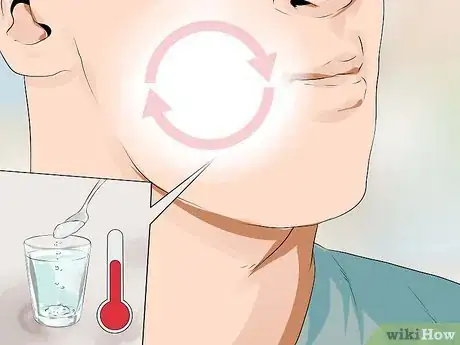


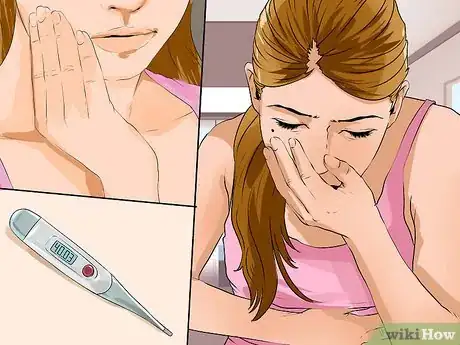
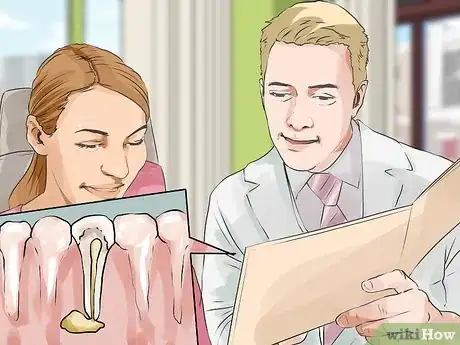
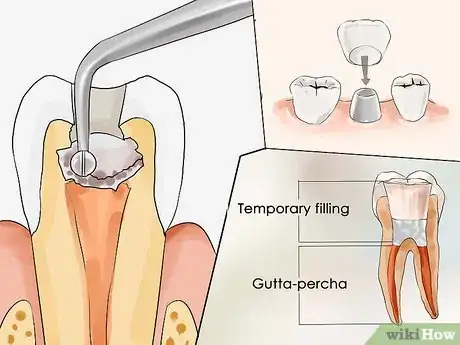
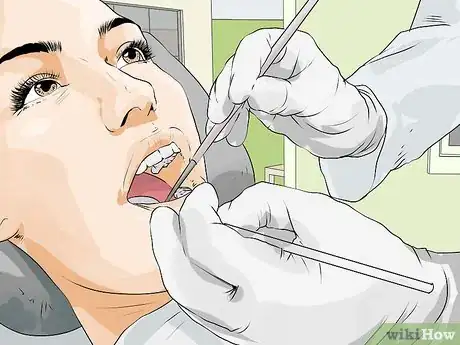
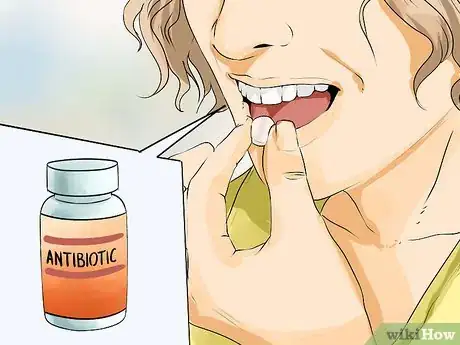


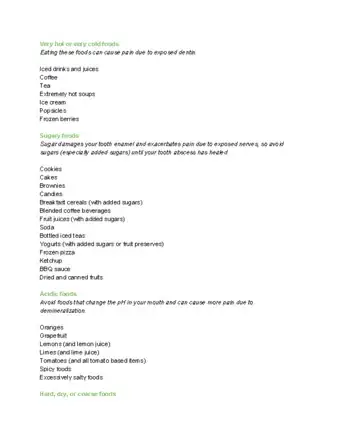
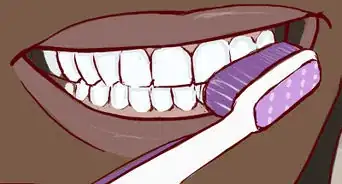
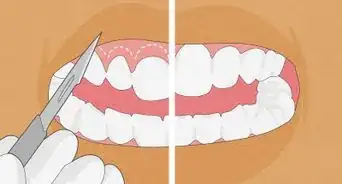
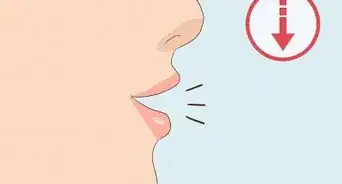
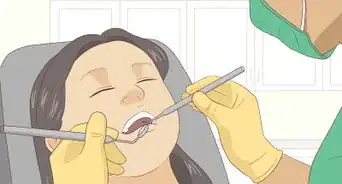

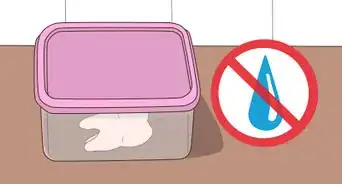
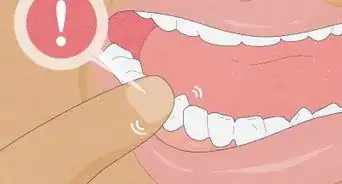

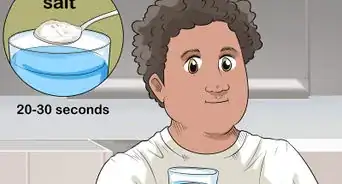
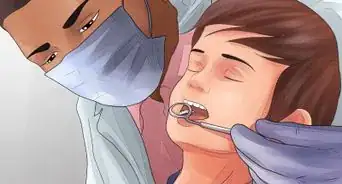













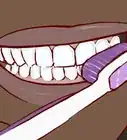
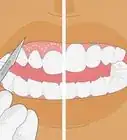
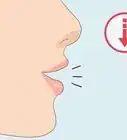
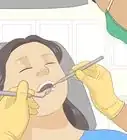



































Medical Disclaimer
The content of this article is not intended to be a substitute for professional medical advice, examination, diagnosis, or treatment. You should always contact your doctor or other qualified healthcare professional before starting, changing, or stopping any kind of health treatment.
Read More...